McMaster undergrads stand out and make their mark doing research at Bamfield Marine Sciences Centre on Vancouver Island
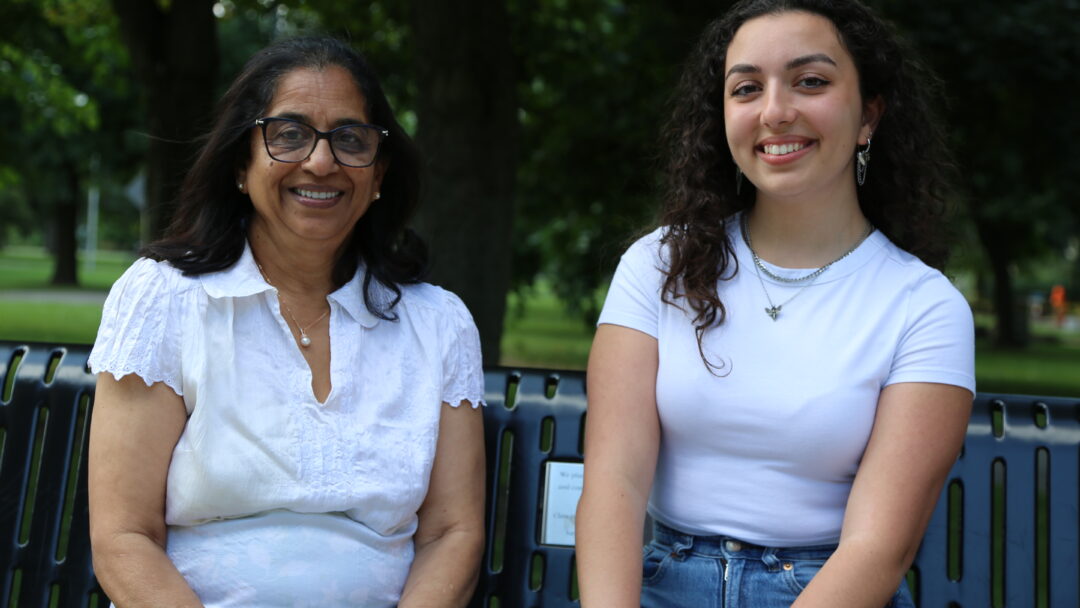
Chloe Nasrala never thought she’d do research as an undergrad, much less design and run an experiment in a world-class centre with million dollar views of the Pacific Ocean.
Yet that’s how Chloe and seven other science undergrads spent two weeks this summer at the Bamfield Marine Sciences Centre. The centre’s a teaching and research facility on the west coast of Vancouver Island, situated on the traditional territory of the Huu-ay-aht First Nations.
They were there at the invitation of Sara Smith, an assistant professor of ecology and evolution in the Department of Biology at Mount Royal University who’s taught and conducted research at the centre.
The second and third-year students were working with Sara on a marine conservation project, looking to find a better way of baiting traps used to catch and kill European green crabs. The crustaceans are among the most invasive marine species on Canada’s east and west coasts. With few predators, the green crabs outcompete native species for food and habitat and destroy eelgrass and shellfish beds. The Huu-ay-aht First Nations were buying herring as bait for their traps but wanted to know if salmon from their hatcheries could be a cheaper alternative.
Spending two weeks at the centre was an experience that checked every box for Chloe, who’s heading into her fourth and final year in the Biodiversity and Environmental Sciences program in the School of Earth, Environment & Society. “I got to be in a lab doing real research in a part of the country I’ve always wanted to visit, studying an ecosystem that I’m passionate about.”
It’s an experience that also happened ahead of schedule. “I thought research only happened once you got a job in the field or you were a graduate student. To already have research experience as an undergrad is something I’ll forever be grateful for.”
And then came the unexpected surprise at the end of their first day – the students got to design and run their own experiment. They weren’t picking up where other students had left off.
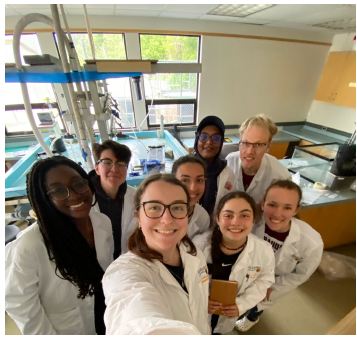 “I assumed we’d just follow a procedure from a previous experiment,” says Chloe. Instead, the students were asked to spend their first afternoon at a white board brainstorming ways to bait the traps. They discussed, debated and wound up pitching an experiment that would use rotten salmon – green crabs have a strong sense of smell – along with pool noodles, duct tape and a whole lot of zip ties (proving that fieldwork is the mother of improvisation). Sara agreed their proposal had potential and told the students to run with it.
“I assumed we’d just follow a procedure from a previous experiment,” says Chloe. Instead, the students were asked to spend their first afternoon at a white board brainstorming ways to bait the traps. They discussed, debated and wound up pitching an experiment that would use rotten salmon – green crabs have a strong sense of smell – along with pool noodles, duct tape and a whole lot of zip ties (proving that fieldwork is the mother of improvisation). Sara agreed their proposal had potential and told the students to run with it.
“We went from being students to colleagues. We felt trusted to do science. That made me think of research in an entirely new way – as a process I could actively contribute to rather than just passively conform to and follow.”
Once they’re all back on campus for the fall term, the students will analyze the data they collected and then report back to Sara and the Huu-ay-aht First Nations on whether salmon bait can be used in the battle against green crabs.
It was one-of-a-kind fieldwork brokered by Sunita Nadella, experiential programming and outreach manager with the Faculty of Science’s Office of Undergraduate Research (OUR). Sunita had spent summers at the centre while working as a research manager for biology professor Chris Wood. “It’s the most wonderful place I’ve ever been as a researcher.” Taking a rowboat across the inlet for mid-afternoon ice cream was an added bonus.
Back at Mac, she befriended Abeer Siddiqui, a science librarian who’d previously worked at the centre’s library. “We bonded over Bamfield.”
Abeer introduced Sunita to Sara while Jim Lyons, OUR’s founding director, gave the green light for the west coast collaboration. The opportunity went up on the OUR’s website and out to every student who subscribes to the office’s email distribution list. Sunita assembled the team.
Making research accessible for all undergraduate students is a priority for the Faculty of Science so OUR and McMaster’s Student Success Centre covered travel and accommodation costs. The students stayed in one of the centre’s cabins with the Pacific Ocean at their door. They were on the hook for food – during their five-hour van ride to the centre, the students pooled their money and bought groceries. They cooked all their meals together, which helped turn them from complete strangers to fast friends.
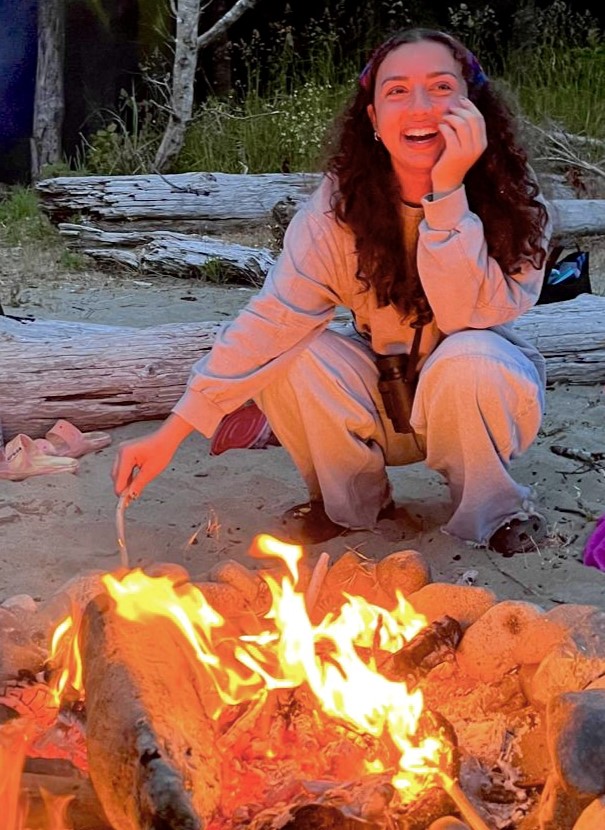 They prepared a few late-night dinners after long days in the lab but it wasn’t all work and no play. For Chloe, the social highlight was a trip to nearby Pachena Bay in Pacific Rim National Park. “I had my binoculars out as soon as we got there,” says Chloe. “For the next hour, there was whale after whale breaching about 100 metres from shore.” Once the sun set, the students told ghost stories around a bonfire and braved running into the freezing water knowing there were whales and so much more just offshore.
They prepared a few late-night dinners after long days in the lab but it wasn’t all work and no play. For Chloe, the social highlight was a trip to nearby Pachena Bay in Pacific Rim National Park. “I had my binoculars out as soon as we got there,” says Chloe. “For the next hour, there was whale after whale breaching about 100 metres from shore.” Once the sun set, the students told ghost stories around a bonfire and braved running into the freezing water knowing there were whales and so much more just offshore.
Sunita, who joined the students after 10 years away from the centre, says the Mac crew made their mark in two ways. She’d asked them to pack their McMaster-branded white lab coats. Students are required to wear them while doing lab work at McMaster – Sunita wanted the practice to continue at the centre, even with its laid back vibe. “Everyone was impressed by the professionalism of our students. They were impossible to miss.”
Every morning, a few students volunteered to do a coffee and pastry run to the cafeteria. They had 15 minutes to get there and back before the next experiment started. “Every minute counted – there was no time to change out of our lab gear,” says Chloe. “We definitely had a few curious people ask us what we were up to in all our garb.”
Along with making a fashion statement, the students blazed a trail with their work ethic and research skills. The centre runs undergraduate university credit courses and rents lab space to professors and their graduate students. But offering lab space to undergrads running their own experiments? That had never been before, says Sunita. It took some persuasion, persistence and calling in a few favours along with solid support from Sara.
The centre’s now looking at adding the Mac model of engaging undergrads in research, says Sunita.
For Chloe, it was unforgettable two weeks. “I’ve gone on research trips before so I wasn’t expecting much more beyond the bare necessities. The Bamfield Marine Sciences Centre is such an exceptional campus – the main buildings are beautiful and remarkably well-maintained. Every wall facing the ocean has floor to ceiling windows – that view was a constant reminder of why we were there and why our research project mattered.”
The centre’s staff also earned rave reviews. “Every question we had, any piece of equipment we needed access to, there was always a friendly face ready and willing to help us. The staff were some of the kindest, most welcoming, most capable people I’ve ever met and worked with,” says Chloe.
Sunita is already planning for next summer. Another crew of undergrads could return to the Bamfield Marine Sciences Centre or head to the Kananaskis Research Centre with the Canadian Rockies as a backdrop. While the destination’s yet to be decided, having students design and run their own research project is a done deal.
“It’s a gamechanger for students.”
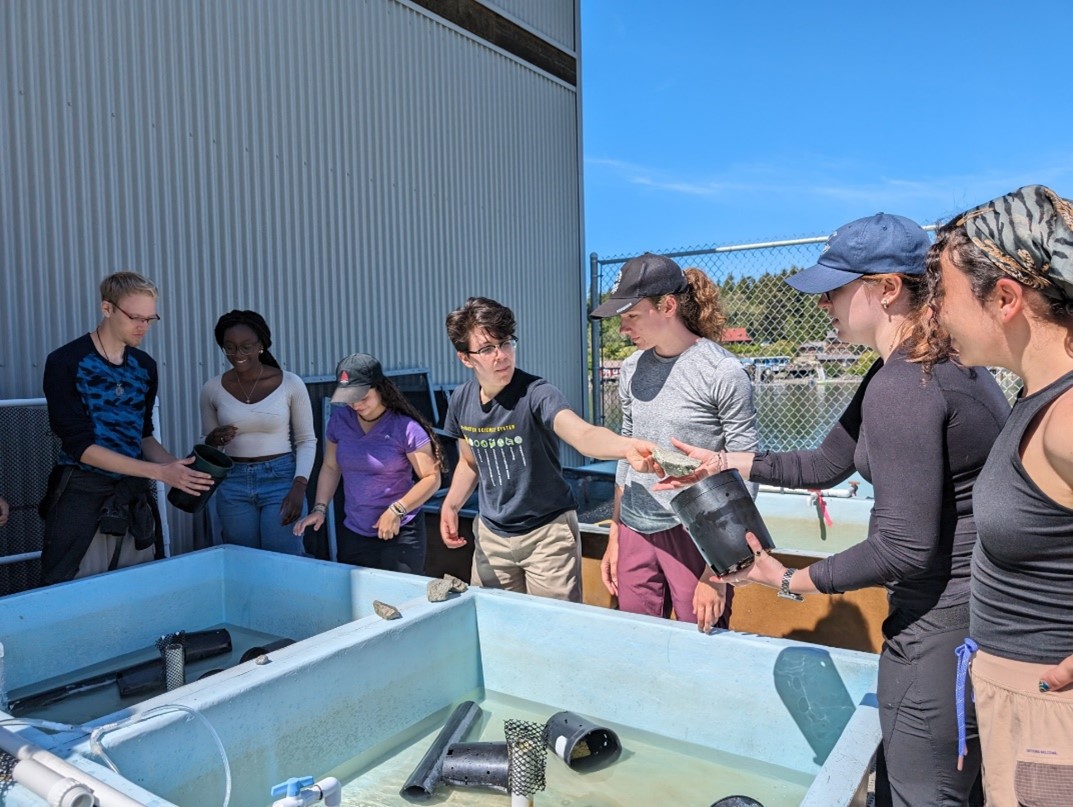
Student testimonials
Jessica Yemen:
“This freedom highlighted the trial and error inherent in research, the creative use of unexpected materials for experimental setup, the setbacks, and the many questions that arise. We had many meetings and made numerous changes to our plans along the way, but with each setback, we learned something new and came up with a way to fix it.”
Milo Vanden Hoven:
“My trip to the Bamfield Marine Sciences Centre totally changed my conceptions of what it’s like to do science. Learning of the innovations of “duct-tape/pool-noodle science” was remarkable, as also knowing that behind every polished methodology section are real people who have to build things from scratch, troubleshoot when the setup goes wrong, and have late nights together drinking coffee when the experiment goes overtime.”
Jonathan Scholtens:
“This experience completely changed my perspective on science as a potential career path for me and has inspired me to consider pursuing a Master’s degree in Biology/Ecology.”
Elisabeth Jonas:
“Having our ideas heard by professionals, get honest feedback and criticism was incredible. I gained such a sense of empowerment, showing me that I am capable of much more than I previously imagined.”
Emilie Guillerez:
“The experimental design process– spending hours at the white board debating, discussing and being utterly confused– put into perspective how nonlinear science is.”
Abeer Farhan:
“Building a research project from the ground up, allowed me to appreciate the inherent and chaotic trial-and-error nature of science.”
Sadie Byrne:
“Developing connections with professors and people in academic spaces has always felt very daunting to me, but after my experience at Bamfield I really discovered that all people in academia are people first, and professors and researchers second.”
StudentsRelated News
News Listing
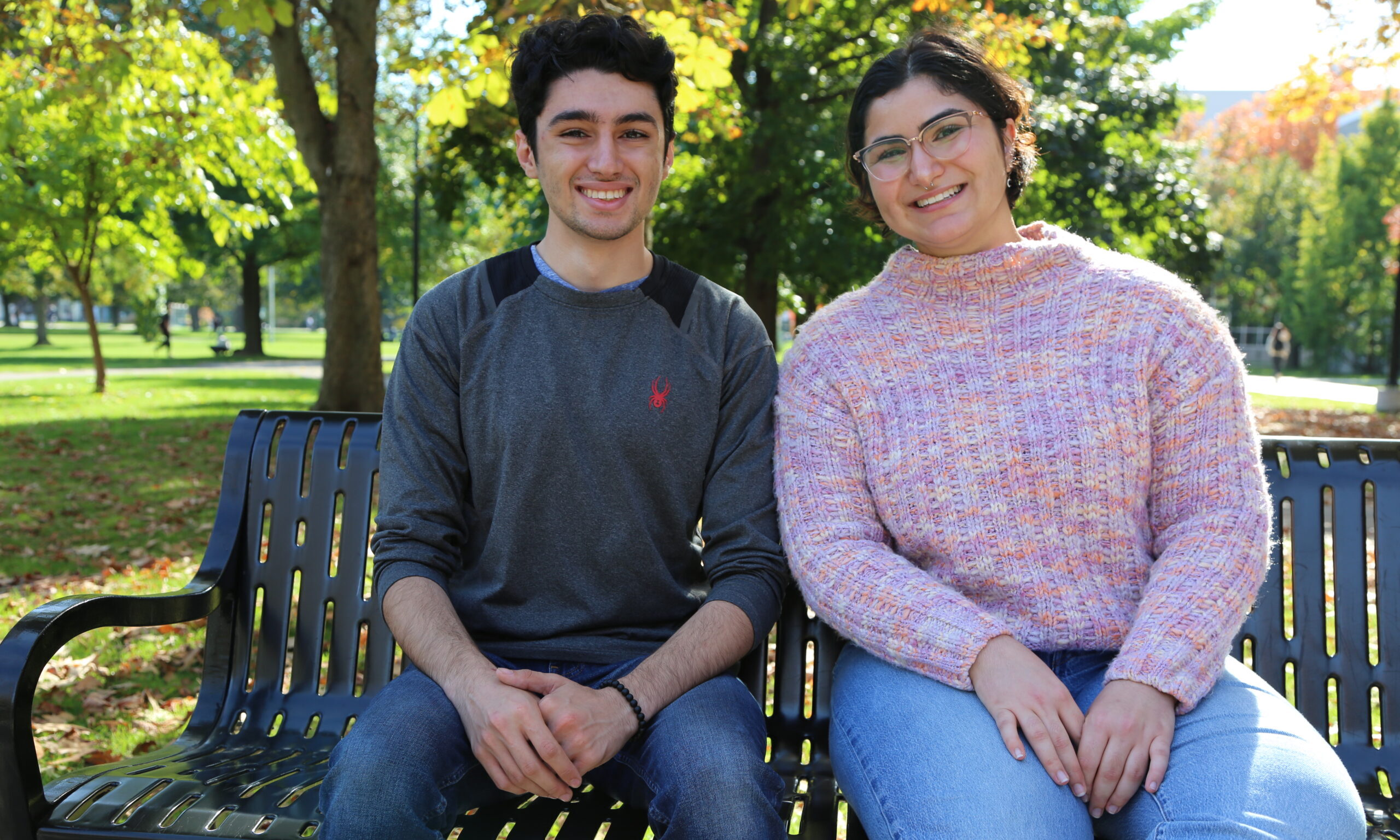
October 25, 2024
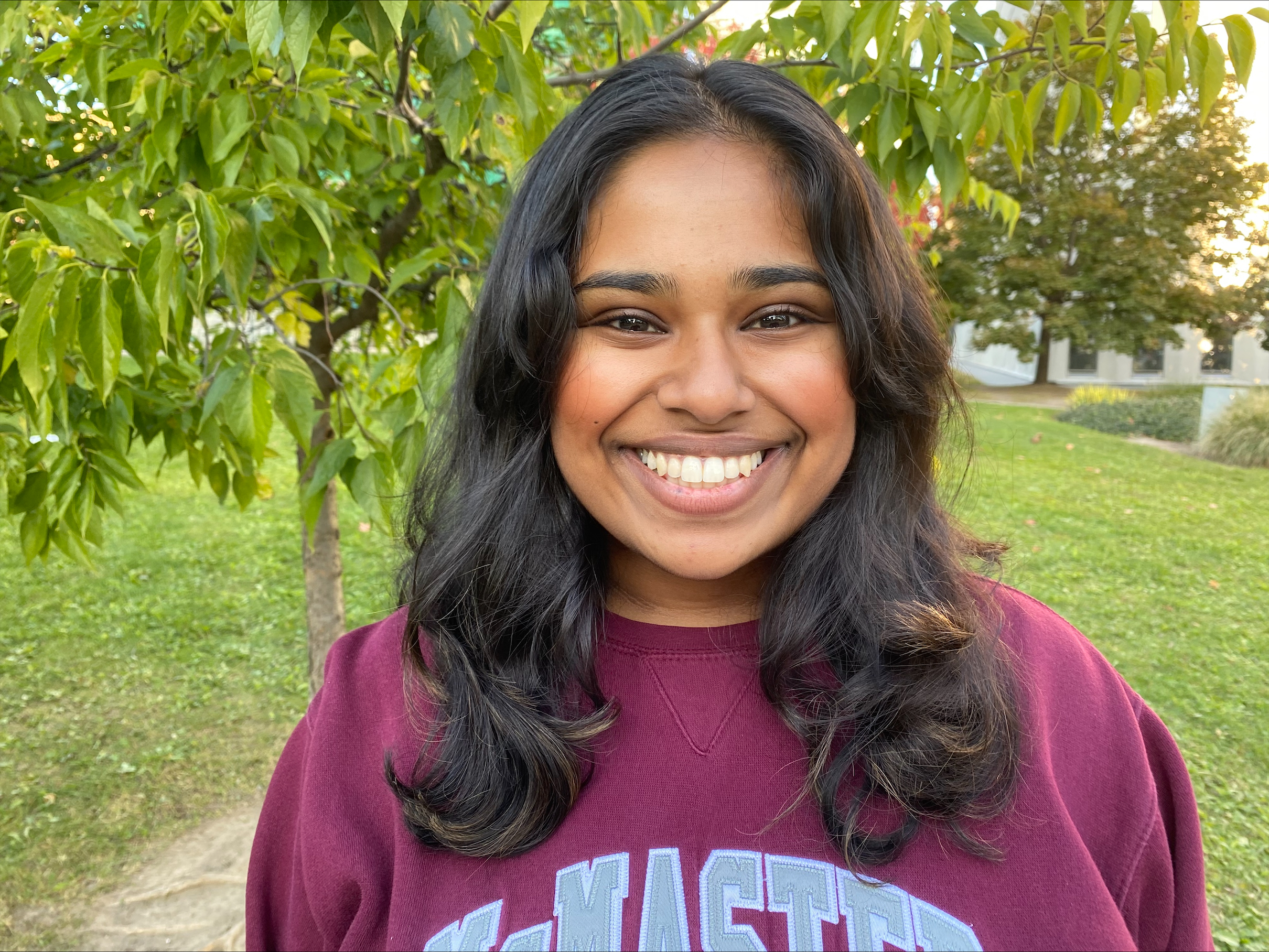
From NOVA to Brain Bee to PNB – lifelong love of neuroscience led to McMaster
Alumni, Outreach, Students
October 18, 2024
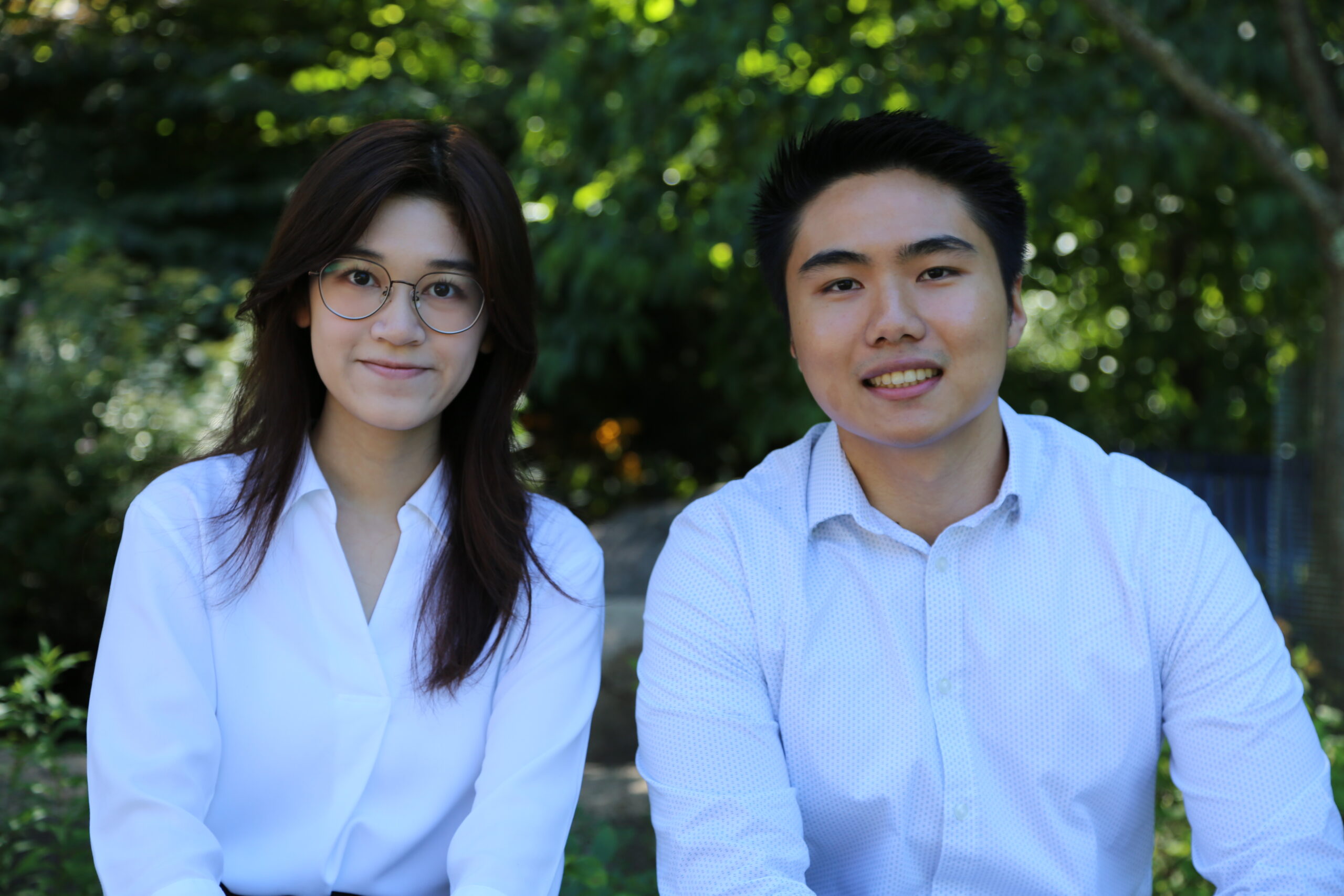
Grad student pays it back and forwards in new research shadowing program for first-year undergrads
Students, Undergrad research
September 11, 2024
